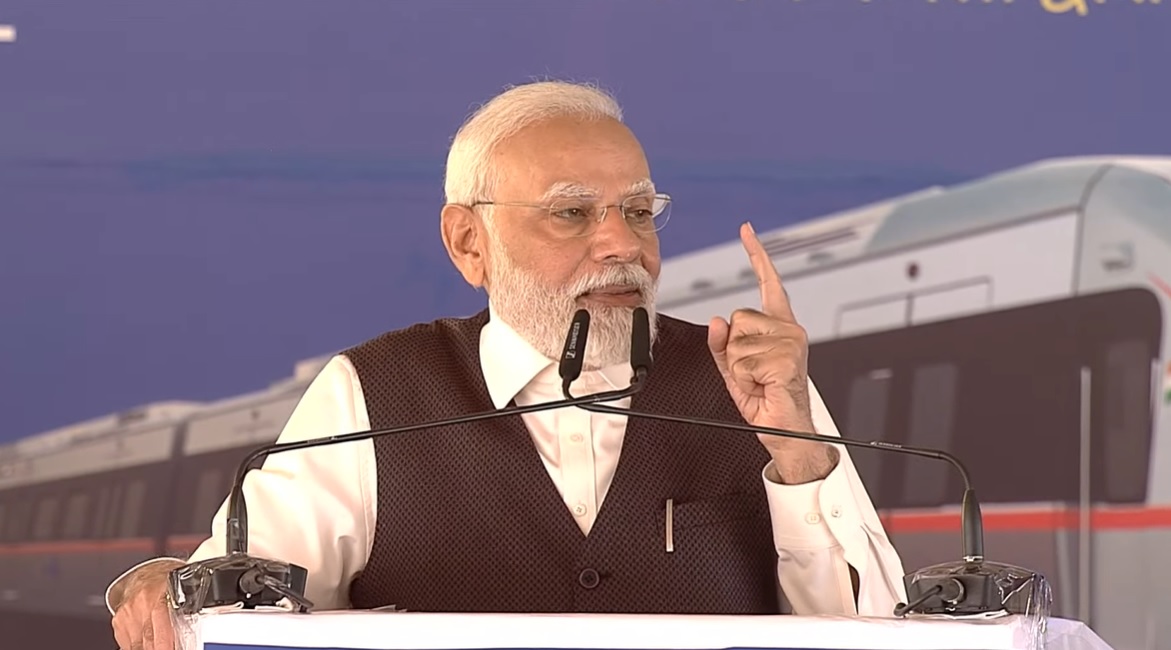Railway Transformation: India’s railway landscape is undergoing a breathtaking transformation, heralding a new era of connectivity, efficiency, and innovation. With the world’s 4th largest train network, India is setting new benchmarks in rail transportation. Let’s delve into the incredible changes that are reshaping the Indian Railways and revolutionizing the way people travel.
Vande Bharat Trains: A Leap into the Future
At the forefront of this revolution are the Vande Bharat Express trains, a testament to India’s engineering prowess. These medium-distance train services, akin to the renowned Shatabdi Express, connect cities less than 10 hours apart. While their design allows for semi-high speeds, operational limitations like multiple stoppages and traffic congestion maintain the speeds at 160 km/h (99 mph) on certain routes and 110–130 km/h (68–81 mph) on others. The first Vande Bharat Express, inaugurated by Prime Minister Narendra Modi, raced between New Delhi and Varanasi, marking a historic moment in Indian rail history.
RAPIDX: Revolutionizing Regional Rail Connectivity
In addition to the Vande Bharat Express, India is embracing rapid rail technology with the RAPIDX service. Rapid, Affordable, Punctual, Inclusive, Diverse, and eXperience-oriented (RAPIDX) trains are set to transform regional commuting. Operating at high speeds, these trains promise swift travel and efficient service. One of the notable features of RAPIDX is the introduction of “Namo Bharat” trains, symbolizing innovation and efficiency. These trains, with their sleek design and cutting-edge technology, are not just a mode of transport but a statement of India’s commitment to a modern, interconnected future.
Vande Metro: A Revolution in Regional Rail Connectivity
India’s railway evolution doesn’t stop there. Enter “Vande Metro,” a groundbreaking service set to operate within a short-distance, intercity rail network covering major cities within approximately 100 km. Designed for a top speed of 130 km/h, Vande Metro promises exceptional frequency, with trains scheduled to run 4-5 times a day. This innovative system is poised to replace existing MEMU services, offering swift regional rail connectivity between significant urban centers. As India’s urban landscape expands, Vande Metro will play a pivotal role in ensuring seamless travel for commuters.
Vande Sadharan Services: Redefining Non-AC Travel
In a historic move, Indian Railways is revamping non-AC travel with the introduction of Vande Sadharan Express. This train will feature 24 LHB coaches and employ two locomotives at both ends, ensuring efficient acceleration. Pioneering features, such as CCTV cameras in every coach, bio-vacuum toilets, passenger information systems, charging points at every seat, and automatic door systems, bring a new level of comfort and safety to non-AC trains. With the push-pull method enhancing acceleration rates, Vande Sadharan Express represents a significant step toward modernizing long-distance travel in India.
Namo Bharat and Amrit Bharat Stations: Hubs of Innovation
Complementing the advanced train services are the Namo Bharat and Amrit Bharat stations. These stations serve as hubs of innovation, offering state-of-the-art facilities and seamless connectivity. With cutting-edge technologies and passenger-centric amenities, these stations are not just transit points but experiences in themselves. Designed to enhance the travel experience, Namo Bharat and Amrit Bharat stations are setting new standards in railway infrastructure.
India’s railway makeover is nothing short of awe-inspiring. With each innovation, the country is not only redefining travel but also shaping a more connected and prosperous future. As the trains speed along the tracks and stations bustle with activity, it’s evident that India’s rail revolution is unstoppable, marking a glorious chapter in the nation’s progress.
Stay tuned for more updates on India’s remarkable rail journey!
Read this also…
https://namobharat.org/revolutionizing-commute-delhi-ghaziabad-meerut-rrts-unveiled/







